
All categories
Featured selections
Trade Assurance
Buyer Central
Help Center
Get the app
Become a supplier

(8523 products available)































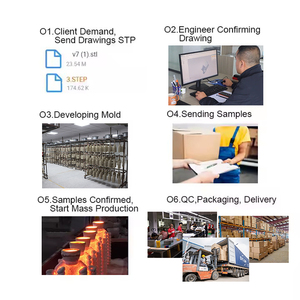
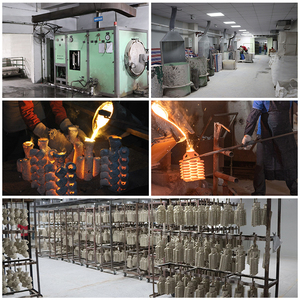




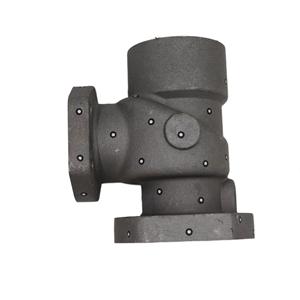
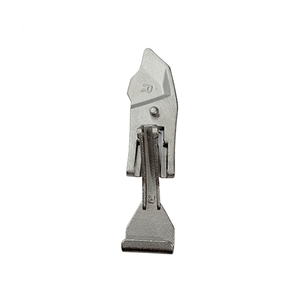


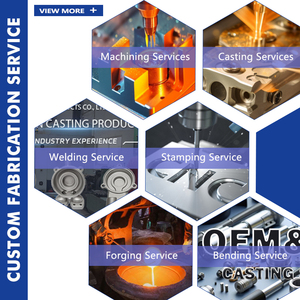



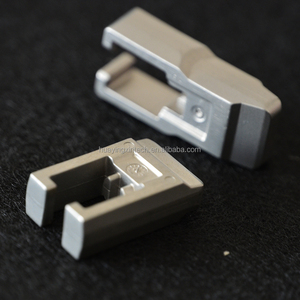



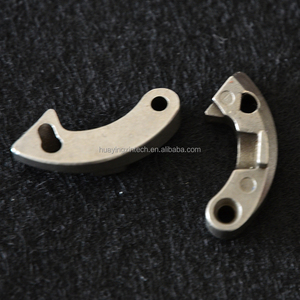
Lost wax brass casting is synonymous with precision and versatility. The lost wax technique generates complex and detailed parts, making it a critical process for numerous industries. Brass's unique properties enhance this ancient method's efficiency and efficacy. Below are some benefits of lost wax brass casting:
Brass castings are corrosion resistant. This makes them perfect for both marine and industrial applications. Lost wax brass casting enables the creation of complex shapes that are difficult to achieve through other casting methods. Lost wax brass castings can be used in jewelry. Or for art and ornamental pieces. They are durable and aesthetically pleasing.
Smooth surface finishes
Compared to other casting methods, lost wax casting produces a smooth surface. This reduces the need for secondary finishing in many applications. Fine details, intricate patterns, and tight tolerances are easily accommodated in lost wax brass casting, resulting in superior final products.
High dimensional accuracy
The precision of the lost wax method reduces the likelihood of defects, such as air bubbles or gaps, found in other casting techniques. This benefit makes it an ideal option for engineering and manufacturing businesses that require consistent high-quality materials.
Durability and strength
Brass is a copper-zinc alloy; it has strong mechanical strength and high durability. This makes it suitable for heavy-duty use. Lost wax brass castings offer better wear resistance. Therefore, they can be used in parts subjected to friction or stress.
Cost-effective production of complex geometries
The lost wax casting method is beneficial and cost-effective. It allows the mass production of intricate parts without compromising on quality. In addition, its efficiency in the production cycle makes it cheaper than other casting methods.
The applications of lost wax brass casting are wide-ranging, thanks to its versatility and ability to produce detailed, high-quality components. Below are some common applications:
Jewelery
One of the most popular applications of lost wax brass casting has to be in jewelry. The technique allows jewelers to create intricate designs, including rings, bracelets, earrings, and pendants. This method offers durability and strength, as well as aesthetic appeal. That is why brass jewelry made through lost wax casting is often embellished with gemstones or detailed engravings.
Art Sculptures
Brass is a favored material for artists creating both modern and traditional sculptures. Lost wax casting enables artists to reproduce fine details in their artwork, resulting in stunning visual pieces. The ability to cast complex forms while maintaining thin sections makes lost wax brass casting ideal for elaborate artistic representations.
Decorative Hardware
Lost wax brass casting produces decorative hardware like door handles, knobs, hinges, and fixtures. The brass gives these items a classic but contemporary look while ensuring resistance to corrosion and wear. The precision of lost wax casting allows the production of detailed designs that improve the aesthetic value of any interior space.
Mechanical Components
Brass's strength and resistance to wear make it suitable for various mechanical parts. Lost wax casting is used to manufacture gears, pulleys, and valve components. These parts are used in machinery and mechanical systems. The accurate dimensions achieved through lost wax casting ensure proper function and reliability in engineering applications.
Religious and Ritual Objects
Brass has been traditionally used in many cultures for religious and ritual items, such as brass incense holders, bells, and figurines. The lost wax method produces detailed brass castings for these items. This enhances their spiritual and cultural significance. Brass's durability also ensures these objects withstand prolonged use.
Industrial Applications
In the industrial arena, lost wax brass castings are utilized in such elements as pumps, valves, and fittings. These components often require precise tolerances and excellent corrosion resistance. Both of which are offered by the lost wax brass casting method. It is especially useful in making parts for plumbing, HVAC systems, and other engineering applications where reliability is key.
Brass lost wax casting requires careful consideration of materials, parameters, and post-casting processes to ensure optimal results. Below are key specifications and maintenance tips for the lost wax brass casting process:
Wax pattern material
The wax employed in creating the patterns for lost wax brass casting must be malleable enough to be shaped easily but with a melting point high enough to retain its form during the casting process. It must also be compatible with the brass alloy to avoid adverse reactions during casting. Common choices include paraffin or compound waxes precisely formulated for casting.
Brass alloy composition
Brass alloys are composed of copper and zinc in differing ratios, oftentimes with the addition of other elements. This provides varying properties to the brass. Select an alloy depending on the intended application. Other alloying elements can be lead for machinability, iron for strength, or tin for corrosion resistance.
Investment material
Average investment materials used to create molds for lost wax brass casting are silica-based compounds. They should also possess high-temperature resilience and be easy to remove from the patterns. Many manufacturers use a liquid investment shell that can be poured over the wax patterns. This investment then hardens to form a mold for the casting.
Pouring temperature
This is critical for achieving a void-free cast. The brass alloy must be melted to a specific pouring temperature range that allows it to flow easily into the mold but prevents segregation of alloying elements. Too hot or too cold will lead to defects in the final casting.
Mold curing time
The time required for the investment mold to cure varies based on the temperature and humidity levels of the environment, as well as the investment material's thickness. Carefully follow the manufacturer's instructions to ensure proper hardening before pouring the molten brass.
Maintenance of molds
For multiple uses of the same mold, then proper cleaning and care are critical to maintain the mold's integrity over repeated castings. Regularly inspect for cracks, wear, or buildup of residue. This can affect the surface finish of the castings. Invest in proper cleaning tools and techniques to extend the lifespan of molds used in brass casting.
Post-processing
Brass castings usually have residual investment material stuck to their surface. Remove this investment by methods like water blasting, acid etching, or manual chipping. After cleaning, castings should be annealed to reduce internal stresses, followed by polishing, machining, or other finishing treatments based on the desired end-use.
The lost wax brass casting process can produce highly detailed and intricate designs. It is, however, important to ensure high-quality castings and what is more, to prioritize safety. Below are key quality and safety considerations for lost wax brass casting:
Wax pattern quality
Since the wax patterns used in lost wax brass casting determine the final casting's accuracy and detail, ensure the patterns' material has the right consistency. Maintain ambient temperature and humidity levels to prevent the wax from cracking or deforming.
Investment mold preparation
Thoroughly clean and prepare the investment materials to prevent air pockets. Avoid air pockets from forming in the mold as they pose a threat to the castings' integrity. Properly mix and degas the investment material to remove trapped air bubbles. They cause weak points or surface defects in the brass castings.
Controlled environment
Avoid environmental conditions that can adversely affect the quality of the investment mold. These include extreme temperatures and high levels of dust or moisture. Maintain a controlled environment to guarantee consistent results and high-quality brass lost wax investment castings.
Personal protective equipment (PPE)
Casting brass can be dangerous due to the high temperatures involved, the handling of molten metal, and the potential exposure to hazardous fumes. PPE that should be worn includes heat-resistant gloves, safety goggles, a face shield, and a respiratory mask. These accessories enable protection against burns, splashes, and inhalation of harmful particles.
Ventilation
Ensure that any space where lost wax brass casting is taking place is sufficiently ventilated. This is due to the fumes emitted during the melting of brass. They can be toxic if inhaled in a prolonged manner. Good ventilation prevents the buildup of hazardous gases and improves air quality. This reduces respiratory risks.
Fire safety
Brass is a highly flammable material; thus, ensure fire safety always. Keep flammable materials away from the casting area. There should also be fire extinguishers within reach in case of emergencies. Follow proper procedures for handling and disposing of any combustible materials that may come into contact with molten brass.
Yes. Lost wax brass castings are ideal for outdoor applications due to their corrosion resistance and durability. Hence, they are popularly used in hardware, sculptures, and marine components. Additionally, their ability to withstand outdoor elements without significantly degrading makes them suitable for long-term use outside.
It is highly sustainable since both wax and brass are recyclable . Moreover, the precision of lost wax casting minimizes material wastage. The process can be reused multiple times and offers longer life cycles for cast products. This then contributes to a more sustainable manufacturing practice than many other casting methods.
They are two different casting methods in the sense that lost wax casting achieves finer details because the wax pattern is more intricate and detailed. Lost wax casting produces a smooth surface finish in comparison to sand casting. Sand casting is faster and more economical for large-volume production of simple components.
Yes, it is highly cost-effective. While the initial costs of creating a mold may be higher than other methods, lost wax brass casting actually saves money in the long run. It produces high-quality, detailed castings that require less post-processing and fewer repairs. This makes it a cost-effective solution for manufacturers and industries requiring durable and precise components.